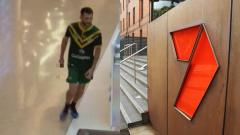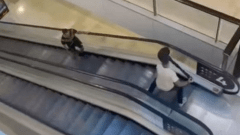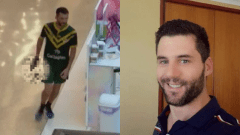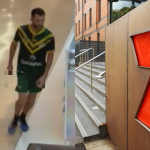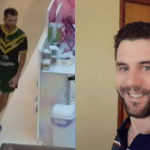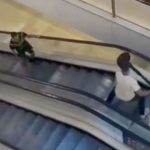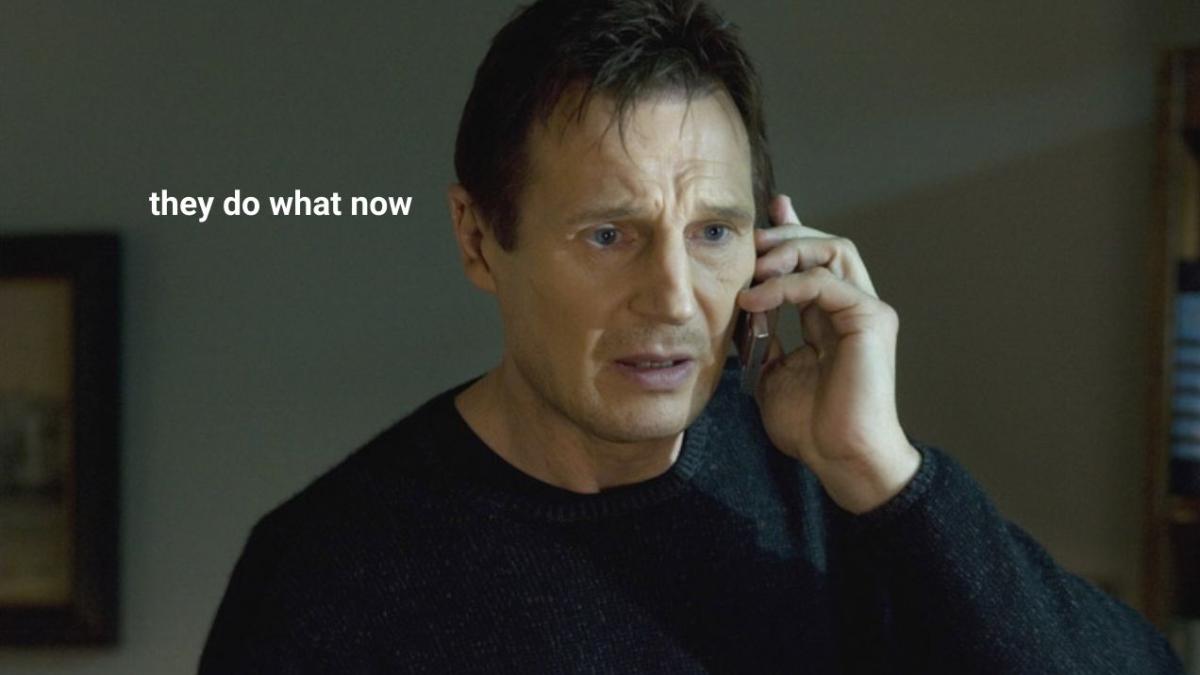
Throughout this pandemic, some of the greatest myths have been about our contact tracing units. Often, people find themselves asking questions like: How exactly do they operate? Can they access your financial records or your contacts list on your mobile phone? When do they call the police, if at all? What do they do when someone refuses to answer their calls?
So, playing myth-buster for a hot minute here, PEDESTRIAN.TV spoke to a member of a contact tracing department in Greater Sydney to break down all the myths around the NSW Health’s public health units. P.S. To protect their privacy, we’ve changed the name of our source to Kevin.
Here are 16 things we learnt in our cheeky 20-minute chat with someone who works in contact tracing.
Contact tracers only have your bare minimum of contact details
Contact tracers are the ones that give people their results. When a swab comes back positive, they’re sent a notification with the person’s name, where they live, and a phone number—nothing more.
They contact cases within 15 to 20 minutes of their results coming back from the lab
Contact tracers get swabs back between 8am to 10pm. They initiate the first phone call within 15 to 20 minutes after getting the results back.
Contact tracers can tell when you’re lying to them
Last month, NSW Chief Health Officer Dr. Kerry Chant claimed that some, not many but a noteworthy few, were giving misleading or inaccurate information to contact tracers, partly induced by fears of what might happen to them if NSW Health found out they were breaching stay-at-home orders.
According to our contact tracing source: “It’s normally really obvious if they’ve actually withheld information that’s really key.
“What we’re usually looking for is the source of infection, so if they’ve given us all this information and they’re sort of saying, ‘I’ve been at home all the time’, or ‘I’ve only gone to this location’, but we look into it and there are no cases there, were very persistent of going back and going, ‘can you really take your time [and think if there’s anywhere else you’ve been]’.”
The amount of people they’re tracing per day depends on how much information a case will provide them
“It depends on whether you’re on it full-time or on rotation, but normally, per shift, you would probably do maybe three or four cases. It doesn’t sound like a lot but that’s because the actual workload can be quite intensive.
“In some instances, we might’ve interviewed a case and the case has said, ‘I’ve been here’, or ‘I went to work’ and they’ve given us their close contacts, and then we will have gotten in touch with those close contacts and send them off to get tested. Whereas other times, you will get the ones that are more out of the blue, where we didn’t know that they were a close contact yet.”
Often they can already tell whether someone will test positive before the results even come back
“Depending on what risk assessment we’ll do, you can take a guess and go, ‘we think these people, based on the amount of exposure that they had in this setting, it’s pretty much guaranteed they’re going to get it’,” said Kevin.
“You can feel when the public health unit is pretty much just waiting for those [results] to come back [positive].”
Contact tracers always interview household close contacts even if they’re all from the same house
“Even if there are four people in the same house and all family members, we will actually want to talk to them individually to notify them that they’re close contacts.”
As a good example, Kevin explained that he recently had four positives come through that were linked to the same family and household. In just one phone call with all four at once, he was able to learn that only one of them had been outside of their home during their infectious period, and the places that that one person had been to were really minimal. Unfortunately, however, it’s not always as easy, which is why they individually contact everyone in a household.
Having contact tracers who can do interviews in other languages “makes a world of difference”
“It just makes a world of difference if you can have that interview in language because it makes people more comfortable that they’re not just talking to someone from the government,” he said.
“We need to acknowledge that for some people in some backgrounds, getting a phone call from the government is actually quite an ominous thing. There might not be trust in health systems.”
More work needs to be done on encouraging people from Culturally and Linguistically Diverse (CALD) communities to get a test when they’re not showing symptoms
“For a lot of non-Western cultures, getting preventative health care isn’t as much of a priority. You’d only go to the doctor when you’re sick.
“That’s where a lot of the work needs to be done around this for some communities, this idea of having an asymptomatic virus that they don’t know that they have yet, why would they go to the doctor to talk about it if they’re not sick yet.”
When there’s an exposure site with a large amount of close and casual contacts, the Ministry of Health steps in and uses what’s called ‘prodocom messaging’
“When you get larger exposures—like workplace exposures or if we had an exposure at a university—that gets escalated to [the] Ministry [of Health] because they have a team of about 300 contact tracers.
“They do what’s called prodocom messaging, which is an automatic text messaging service that can basically get a list of 300 people who might be a close contact and send them all an automatic text message saying, ‘you’re a close contact, you need to get tested immediately and you need to self isolate until this date’.”
When asked about IKEA Tempe, which was an exposure site linked to 2000 close to casual contacts, our contact tracer source said that NSW Health used a mixture of prodocom messaging and direct phone calls.
Contacting venues is their biggest issue right now
“Many venues don’t have up-to-date contact details or we’re trying to contact venues out of hours. You’re trying to call them up on a Sunday at 10 pm and they’re not picking up, but we still have to actually get in contact with them.”
When venues don’t pick up the phone, contact tracers will escalate the issue to the Ministry of Health. They’ll then contact the Police Operations Command who will then send out police officers to the venue.
“If we know that the shop is there but the phone number is wrong, or that they’re just not picking up the phone, we can actually get the police to be the ones to go out and go, ‘you need to take this phone call from health’.”
When people are purposefully avoiding being contacted by NSW Health, they call the cops
“If we do find situations where you’ve got someone who is obviously very purposefully avoiding being contacted by health, we get the police involved. That includes if we notify someone that they’re a close contact and tell them that they should be isolating and find out that they’re not isolating properly.”
If someone doesn’t check in to a venue via a QR code or doesn’t exactly know when they were at a specific venue, contact tracers may ask them to go through their financial records, but they don’t ever have access to your financial information
“If we’re interviewing someone and find they’ve been to Woolworths but don’t know when and didn’t check in via the QR code, we’ll ask them to look up their bank statements, Uber ride receipts, or even a text about a delivery,” he explained.
“We want to be as precise as possible because if we know that someone was at a Woolworths precisely between 11:03 am and 11:22 am, it means that we can list that time and identify the people that were there within that time slot as close to casual contacts.”
When you see an exposure site where someone’s been there for half an hour, it could mean that someone didn’t check-in and doesn’t remember exactly when they were there
“If we can’t be as precise, we’ll likely take it to half an hour on either side. It’s the difference between having an unknown 60 people as close contacts and having 100 to 150 people as close contacts.”
No, contact tracers aren’t planning on contacting everyone in your contacts
Earlier this week, NSW Premier Gladys Berejiklian seemingly claimed that contact tracers may try to contact everyone on someone’s phone. Speaking with our source in contact tracing, however, they said that that’s not likely to happen, especially given that it “would just create more work, not less.”
“Not as far as I’ve heard. I do know contact tracers ask cases to start messaging their contacts to tell them to go get tested straight away.
“We do also collect phone contact details but I highly doubt it’s sending messages to everyone in a case’s phone contact list.”
The people who worked in contact tracing last year aren’t the same people working now
While each public health unit has a group of core staff specialists and senior health experts, a decent amount of the staff in contract tracing are students in their final year of a Masters of Public Health and registrars who are there on placement for three to six months. The good news is that it means there’s a healthy level of staff turnover but it also means that there are new people on the job every few months.
The whole health system is stretched thinner this time compared to last year’s outbreaks
There are a number of different factors between the current outbreak and the ones in 2020 that make this one a lot harder for the whole health system.
“This time around compared to last year, we’re also staffing quarantine hotels, which takes up a significant portion of resources, as well as testing centres and vaccinations centres. We didn’t have the vaccine rollout in March last year.
“And also with the very first lockdown, we stopped all non-essential health services, so all health staff basically got redeployed in some way to be geared towards COVID. They have shifted back to that again but that only happened about two weeks ago.”
All adult Aussies (yep, even if those of us under 40) are currently able to get the safe and effective AstraZeneca vaccine through a GP. Talk to a doctor to see if it’s right for you.
Alternatively, you can triple-check to see if you’re eligible for the Pfizer vaccine here.
The best vaccine is the first one you can get, and that’ll be our ticket out of this mess.

